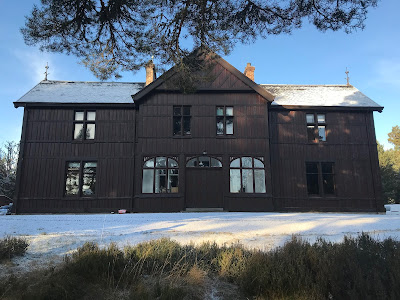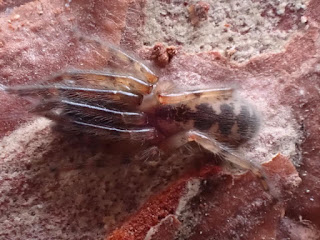Easy and aleochs are not two words that often go together.
They are probably the most difficult beetle group to get to grips with. There are a lot of them and many of them looking infuriatingly similar, with only subtle physical differences. Either in the shape of the aedaegus or the way the hairs lie on the pronotum. Many species are rather small and so to see the finer details of palps or ligula (google it!) takes a better microscope than mine.
I've more often than not found myself swearing at a tiny beetle as I fail to even get the thing to genus. I'm starting to card and dissect males for later identification having first counted the number of tarsal segments on each limb (an important step in figuring them out).
So it was good to find and identify two new species with relative easy.
The first I found last week in a wood chip pile at the RSPB's Headquarters. It's a crazy looking thing that I initially thought was in the genus
Falagria. Whilst I struggled to get any further someone kindly pointed out that it was in fact
Myrmecocephalus concinnus. The little pointy bits at the base of the pronotum are the giveaway.
There isn't much info on t'internet about this species but it appears to have been introduced to the UK at some point in the early to mid-20th century. There aren't many records on NBN but I suspect that is more likely down to NBN not being up-to-date. However, and more interesting is that this is the first record from any RSPB reserve. But that's probably because most staff have better things to do than root around in piles of decaying plant material looking for beetles.
The second easy-ish aleoch was found last summer whilst out moth trapping at a Local Nature Reserve in the Cambridgeshire Fens. I say Nature reserve but it was more of a glorified dog toilet with very little nature-value. However, there was a small reed bed and a couple of ponds and the surrounding area is all intensive farmland, so always worth a look to see what's hanging on. This particular beetle was attracted to the light traps we were running.
It keyed relatively simply to the genus Chilopora but when I went to check my UK checklist I found that it had now been assigned to the genus Tetralaucopora. But which species? The key I used was for Swedish species and only one of the UK species was mentioned. So I did what I normally do and stuck it on the Beetles Facebook group and asked if anyone recognised it. I got an almost immediate response that it looked like the commoner species, longitarsus (there are only 2 species in the UK).
However as I had a male, I thought it worth checking to be doubly sure. This what I found.
Try as I might, I couldn't track down an image of the aedaegus of
longitarsus to compare it to. That was until someone pointed me to
this. Turns out that this species is also known as
Parocyusa longitarsis! As if beetling wasn't complicated enough...
The good news is that my dissected beetle is a perfect match to the photo of a known specimen. So that's another aleoch notch on the metaphorical bed post.










































